Tower silos are widely used for the storage of grains in agricultural projects, storage of cement and slag in ready-mix concrete plants, and for bulk material storage in mines and ports. Tower silos can be made of Aluminum, Steel, Concrete and Reinforced Concrete.
In this article, we will review the applications of nondestructive testing and evaluation of concrete silos. We will discuss how structural engineers can use data obtained from NDT/NDE to assess the structural details of concrete silo and to identify structural integrity, and durability performance issues of concrete.
Existing Tower Silos
Many older concrete silo structures are still in use and operation around the globe. Since silos are generally exposed structures, they are vulnerable to the environmental loads and negative impacts of harsh climates. This would accelerate the deterioration of materials such as steel and concrete, which in turn could result in a number of structural or durability concerns in the long run.
In recent years, the incidence of collapse of these structures has increased (see Concrete Silo Roof Collapse in Richmond, and Steel Silo Collapse in Vancouver). However, many Canadian farmers and industrial asset owners continue to operate these older silos without considering the deterioration that may have occurred due to age, weathering, and the effects of silage acid attack. The deterioration of these facilities can be a danger to humans and animals, as well as loss of the stored product” (Reference).
Routine Inspection and Condition Assessment of these facilities will minimize (or eliminate) the risk of catastrophic failures. In this article, we will review how close-up inspection and nondestructive testing and evaluation can help engineers identify the structural details, identify the location and extent of potential defects, and assess the durability parameters of concrete silos.

Nondestructive Evaluation of Concrete Silos
Nondestructive evaluation of concrete silos can help structural engineers and facility managers with accurate information about the structural details, and assessing the extent of defects. In this section, we will review how different NDT methods can help assess an existing concrete silo:
Determine Structural Details of Concrete Silo
1- Identify Steel Reinforcement
Nondestructive Testing can help identify some of the key structural features of the concrete silos. For example, many of the design documents are often lost or poorly maintained for some of the older concrete silos. Rebar spacing and rebar size information can help structural engineers in evaluating the load-bearing capacity of the silo structure.
Nondestructive test methods such as Ground Penetrating Radar (GPR) can help map steel rebar in concrete silos. Moreover, GPR results can be combined with Cover thickness measurements to provide a clear picture of sub-surface structural features.
2. Estimate the Thickness of the Concrete Silo
It is often important to determine the overall thickness of the concrete silo. Structural engineers need the thickness to assess load bearing capacity of the silo wall for different load scenarios.
Impact-Echo is an advanced nondestructive testing method that can help estimate the overall thickness of a concrete silo with good accuracy and with extreme ease.
Assess the Structural Integrity of the Concrete Silo
1- Ultrasonic Pulse Velocity for Uniformity Check
It is often useful to verify the uniformity and quality of concrete in different locations. This would help the design engineer with a better understanding of quality-related issues in the concrete silo.
Ultrasonic Pulse Velocity test is a cost-effective method for evaluating the quality and integrity of thin concrete components, such as silo walls.
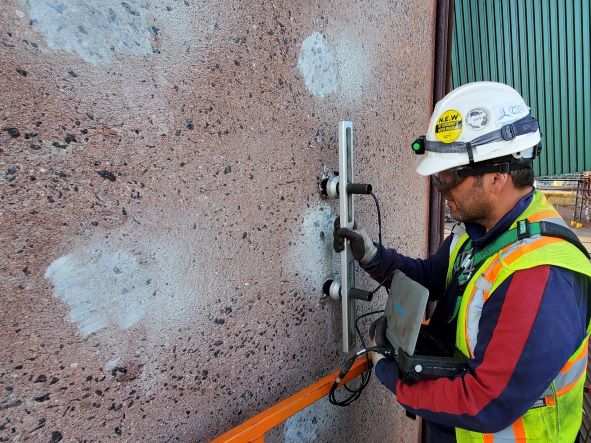
2- Rebound Hammer Testing of Concrete Silo
Rebound Hammer (Schmidt Hammer) test can help structural engineers collect critical information about the uniformity of concrete (near surface), and to estimate the concrete compressive strength. When used systematically, rebound hammer results can provide a reliable means of estimating concrete strength which is a critical parameter in structural evaluation and designing an effective repair.
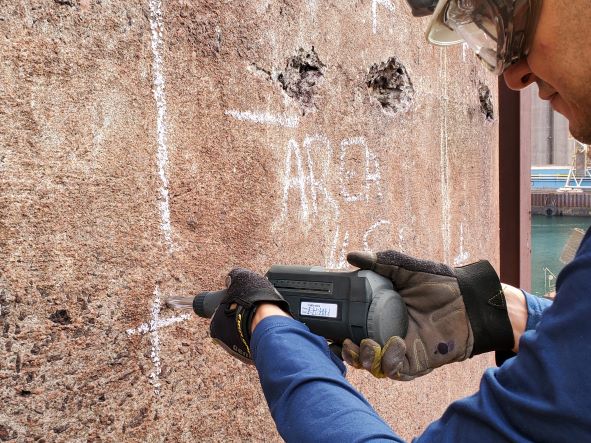
Determine Durability Performance of Concrete Silo
Corrosion Monitoring
Corrosion can be particularly problematic for exposed concrete silos. Some existing concrete silos have sub-standard cover thickness which may result in premature corrosion. Steel corrosion can result in loss of cross section, and reduced capacity of the silo for certain load conditions.
Half-Cell Corrosion Potential Mapping can help structural engineers collect valuable information about the likelihood of active corrosion in concrete silo. This information will help repair design team with selecting better repair materials and scheme.
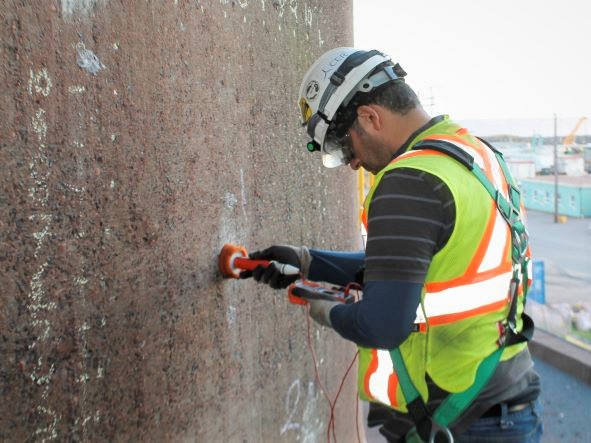
Concluding Remarks
Nondestructive Testing and Evaluation plays a key role in proper inspection of existing concrete silo. A routine visual inspection and comprehensive condition assessment can help engineers in accurately identifying the structural integrity issues, their extent and severity.
- The first step is to perform a close-up visual inspection on the concrete silo. Identify any sign of deterioration, and distress.
- Based on the findings of the visual inspection, a structural engineer can design a cost-effective and reliable test system based on nondestructive testing.
- The results from different NDT methods can be used to determine structural details, quality of built materials, and assess durability performance parameters.

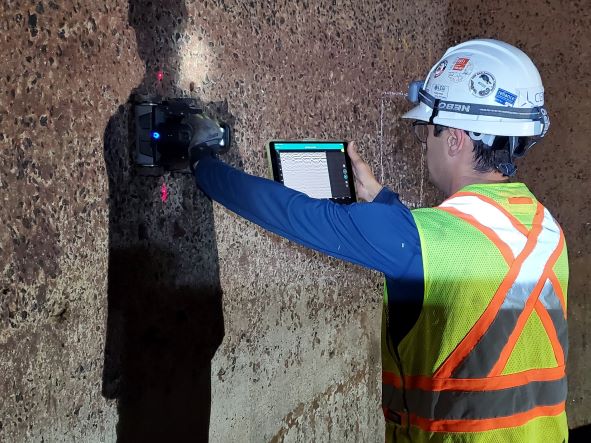
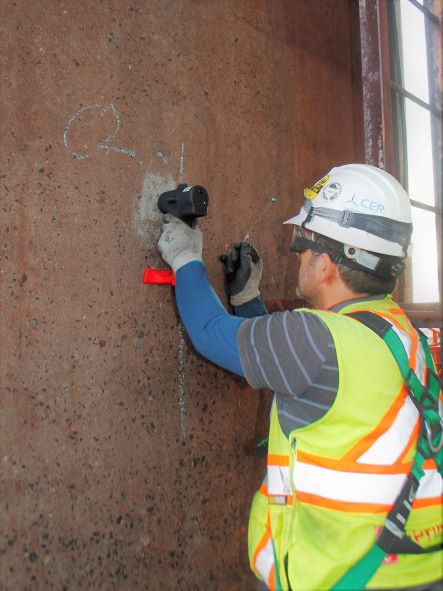
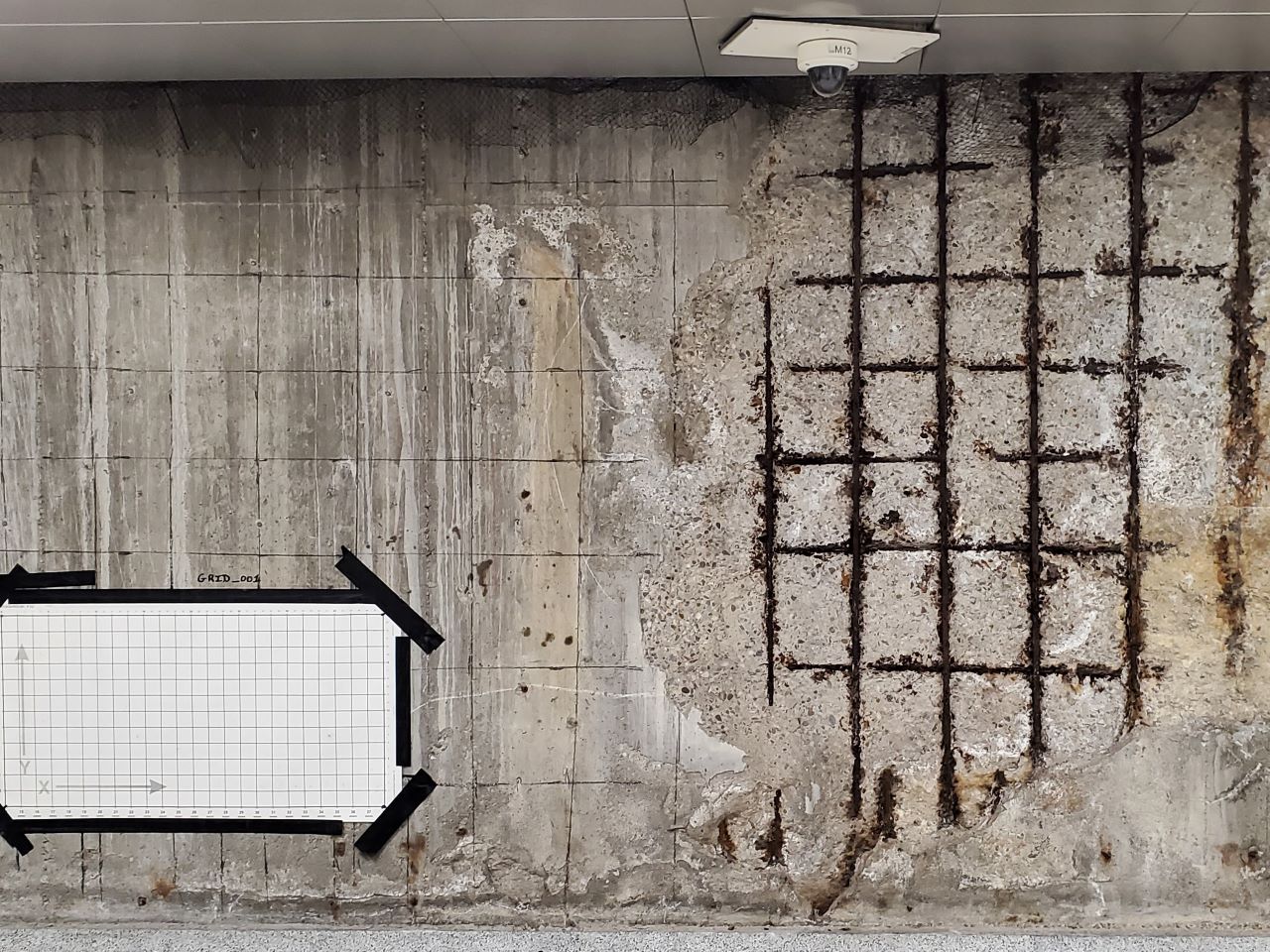
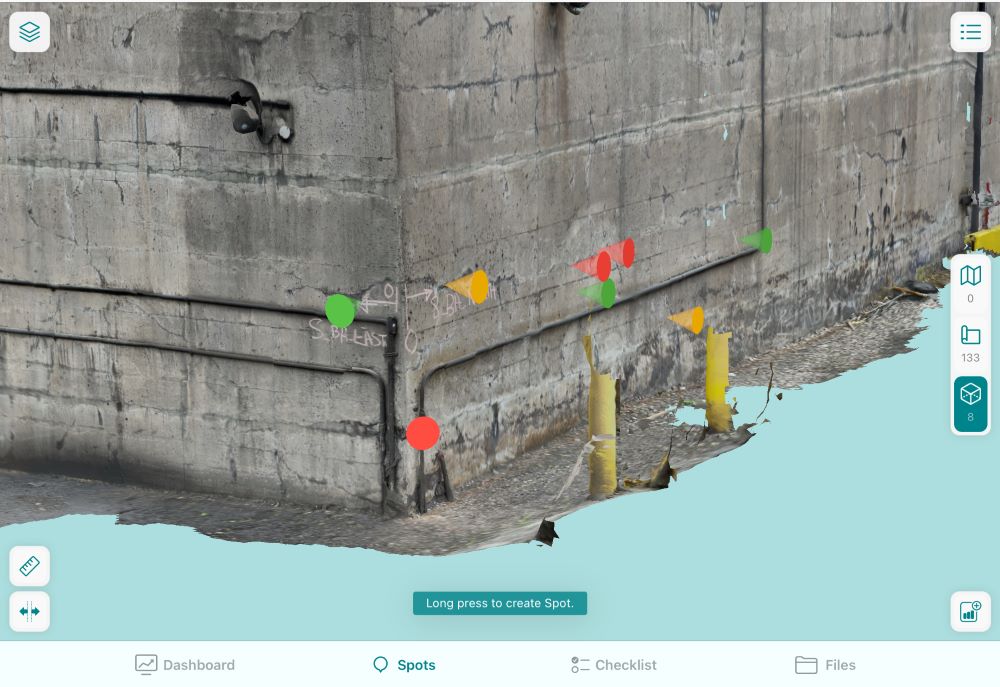

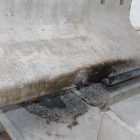

PCTE
Proper explanation. Great writing. keep it up!